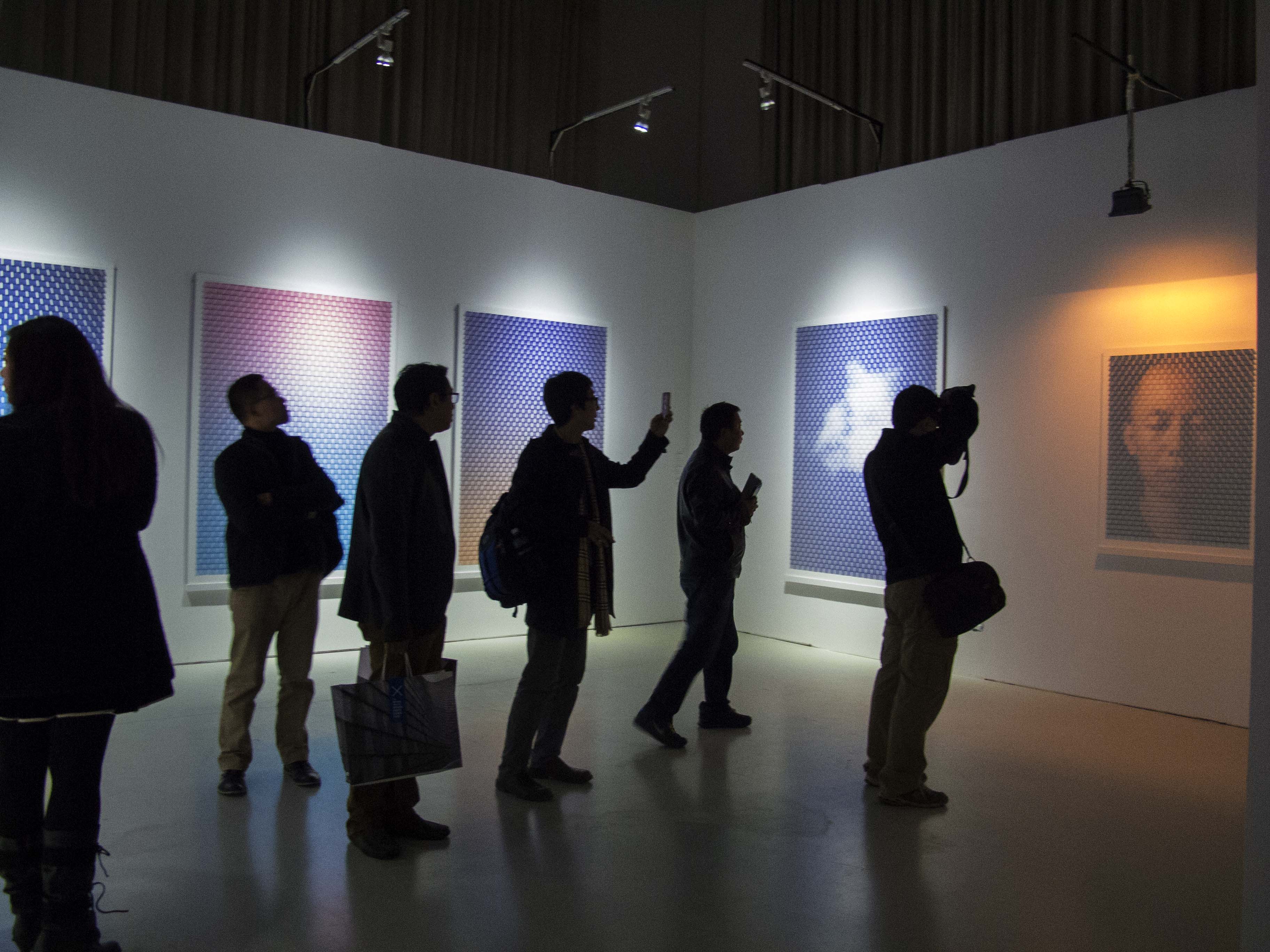Form of Light
Form of Light
Form of Light is an investigation into the very essence and mysteries of the photographic process. Although the term "photography" is generally considered to have been coined by Sir John Herschel in 1839, he may, in fact, have been preceded by the Brazilian Hércules Florence, who used the French equivalent, "photographie," to describe his own experiments in 1834. Regardless, the etymology of the word is the same: based on the Greek φῶς (phōs), meaning "light" and γραφή (graphê), meaning "drawing, writing," together meaning "drawing with light". Wang's method of composing these works eschews the chemical process of fixing an image to a surface, relying instead on an organized fragmentation of a singular image on a series of transparencies, which when exposed to a specific lighting, creates a composite shadow image. The end result is the artist quite literally drawing with light, creating ghostly images through a process that relies on both computers and the human hand.
Wang Ningde uses photographic processes without creating photographs by definition. The effect is closer to that of a camera obscura, an image or representation of reality hovering over reality itself. Furthermore, the gridded images, composed of hundreds of units, subvert the tendency of traditional photography towards the lone cropped image which we refer to as a photograph.
In Plato's Allegory of the Cave, the shadows on the wall are the prisoners' reality. Though the allegory was intended as a means to developing Plato's concept of Forms, what is most striking to our contemporary sensibility is the prophetic description of a collective fixation with shadows on the wall. Ningde has described these works as deliberately generating "an illusory feeling," an insight into the hallucinatory power of photography as a whole. The subject matter he chooses: the sky, trees and clouds, articulate this principle in both representational and abstract guises. As a series, Form of Light offers a unique take on what goes into an image, redefining what it feels like to be mesmerized by the proverbial shadows on the wall.
-Text courtesy of Bryce Wolkowitz Gallery
Artist Statement:
The Form of Light series started with my research into the language of photography. Here, photography is no longer a means of expression, but is transformed into a metaphor for the world, a subject of study. What is presented is neither image nor photograph, but their shadow: proof that illusions exist. While displaying an image to the viewer, the works simultaneously hint at their own illusory nature.
The shadows of photographs illustrates my insight into photography—no
matter what its object, a photo is still just a photochemical reaction. Even
if we believe that a photo can replace the object itself, but that object will
have already ceased to exist, or will have changed. Further, because of the
relationship between time and experience, the photographer and viewer can never
see the same object. In this sense, the image becomes unimportant.
Each Form of Light work originates from a complete photograph. Using a projection formula, a computer calculates and assigns lines of division on the image according to the required compression ratio. The result is that the original image is now divided logically into hundreds of units of varying size, each with their own identifying number code. The image is transferred onto photo transparency, and the units are cut out by hand. These fragments are then assembled according to number code, whereupon the presence of directed light causes the collective shadows of the fragments to form a projected image. The original image is recreated, but in reality, all that can be seen is the photograph's shadow. One could think of this as the recorded result of a process. Personally speaking from my long-time experience working in media, Form of Light is linked to the fragmentation of contemporary life and our image environment.

2013 Beijing International Photography Week

Form of Light/ Polarized Cloud No. 4

Form of Light/ Polarized Cloud No. 4 (detail)

Form of Light/ Thicket No. 3

Form of Light/ Thicket No. 3 (detail)
